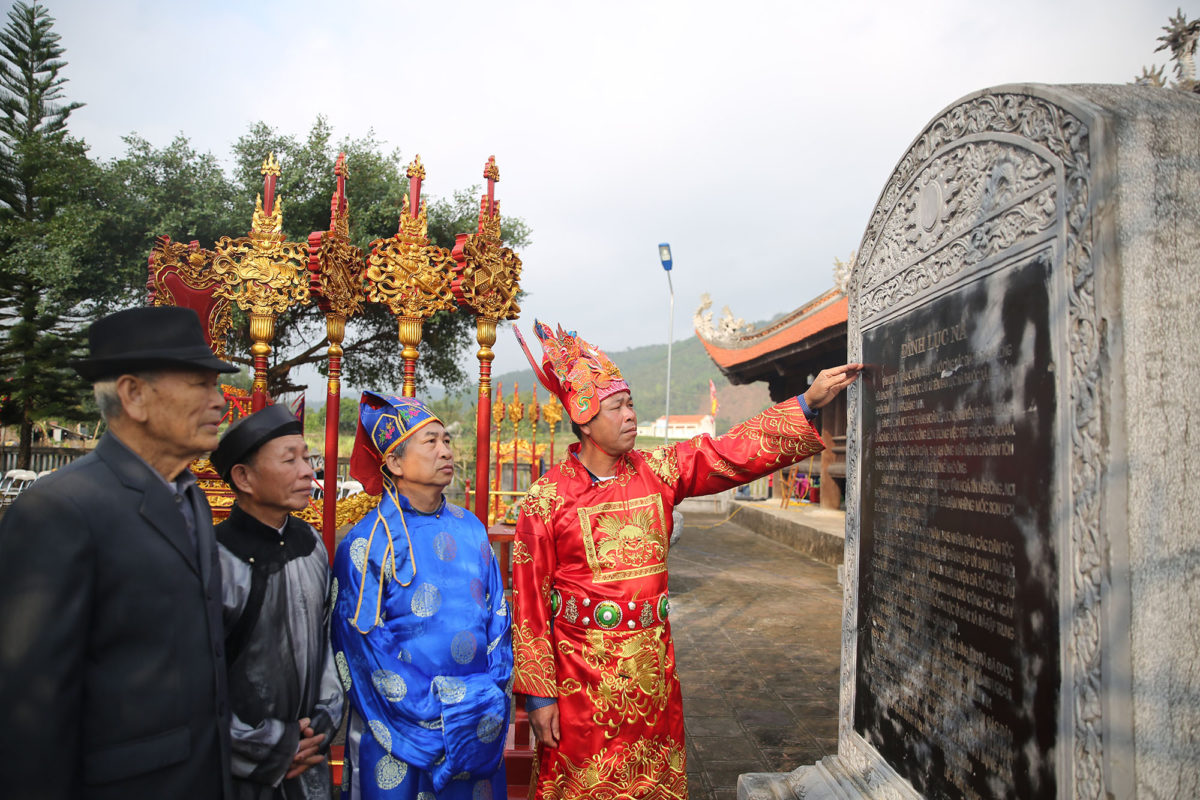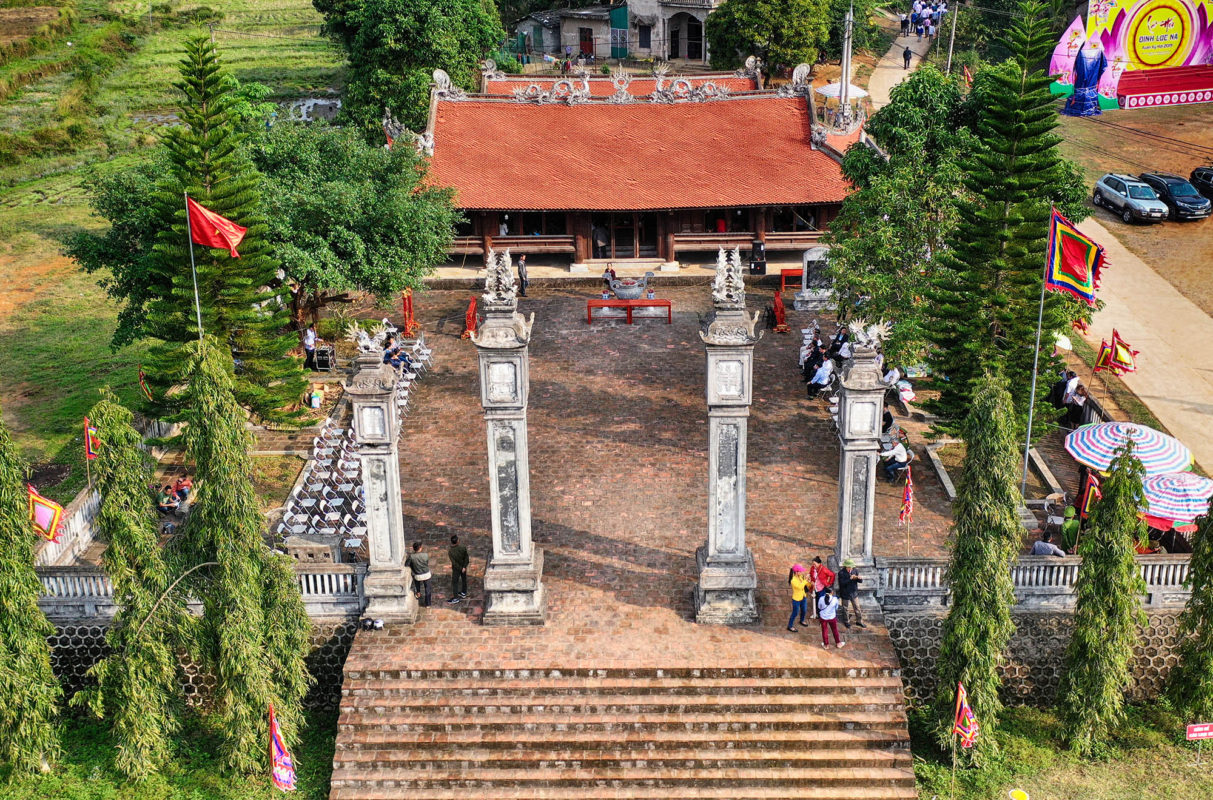Exploring Đình Lục Nà: A Cultural Heritage of Quảng Ninh
Last Updated on 7 January, 2025 by admin
Nestled in the serene setting of Lục Hồn commune, Bình Liêu district, Quảng Ninh province, Đình Lục Nà is a treasured cultural and historical site. Recognised as a national cultural heritage, this communal house embodies the rich traditions and spiritual life of the Tày ethnic group. Beyond its historical significance, Đình Lục Nà serves as a symbol of unity and cultural pride, preserving the ancestral customs of the local community.

The purpose of this article is to unveil the unique beauty, profound history, and cultural importance of Đình Lục Nà, encouraging visitors to immerse themselves in the heritage of this extraordinary site.
Historical Background and Significance
Đình Lục Nà was established during a pivotal period in the region’s history, reflecting the architectural style and societal values of the era. Although the exact date of its construction remains unclear, the communal house has stood for centuries as a testament to the enduring culture of the Tày people.
Historical Role
Throughout its existence, Đình Lục Nà has served as a focal point for cultural and spiritual activities. It is a place where vital ceremonies, including those honouring the village guardian deity and national heroes, are conducted. The site also played a critical role in fostering community solidarity and upholding traditional values.
Recognition as a National Heritage
In recognition of its cultural and historical value, Đình Lục Nà was officially designated as a national heritage site. This honour underscores its importance not only to the local community but also to the cultural identity of Quảng Ninh province and Vietnam as a whole.
Unique Architecture of Đình Lục Nà
The architecture of Đình Lục Nà represents a harmonious blend of traditional Tày ethnic design and the cultural nuances of the Northeast highlands. Its unique structure reflects not only the craftsmanship of the builders but also the spiritual beliefs and communal values of the local Tày people. Visiting this architectural gem feels like stepping into a timeless realm where history, culture, and art converge.
Architectural Style
The style of Đình Lục Nà is deeply rooted in the traditional aesthetics of the Tày people, showcasing simplicity and elegance in its design. The wooden beams and columns, skillfully interlocked without nails, symbolize unity and strength. The structure’s open and airy layout mirrors the close-knit nature of the Tày community, inviting both spiritual devotion and lively communal interaction. Its elevated foundation, supported by sturdy wooden stilts, not only protects the building from flooding but also reflects the architectural wisdom of adapting to the mountainous terrain.

Structural Layout
Walking through the communal house, you’ll notice its thoughtful division into distinct sections, each serving a crucial role in community life. The altar area, positioned in the most sacred part of the building, is adorned with intricate carvings and offerings, creating a serene space for worship. The central hall serves as the heart of the đình, where villagers gather for important discussions, celebrations, and cultural events. Adjacent spaces are designed for ceremonial activities, reinforcing the building’s role as a cultural and spiritual hub.
Decorative Elements
The intricate wooden carvings inside Đình Lục Nà are a marvel to behold. They depict scenes of daily life—farmers tilling the fields, children playing, and traditional dances—alongside spiritual motifs of mythical creatures and deities. These carvings narrate the stories and values of the Tày people, connecting visitors to their heritage. The moss-covered tiled roof, with its graceful curvature, evokes a sense of timelessness, as if whispering tales of generations past. Touching the aged wooden surfaces, I could almost feel the echoes of countless ceremonies and prayers that have imbued the space with a sacred energy.
A Personal Experience
Visiting Đình Lục Nà was an unforgettable journey into the heart of Tày culture. As I entered the communal house, I was struck by the tranquil ambiance, enhanced by the earthy scent of aged wood and the soft light filtering through the roof tiles. Sitting in the central hall, I imagined the bustling energy of past gatherings and the solemnity of ancient rituals. The artistry of the carvings and the seamless integration of nature into the architecture left me in awe. It wasn’t just a visit—it was an immersive experience, one that deepened my appreciation for the enduring spirit of the Tày people and their extraordinary cultural legacy.
Cultural and Spiritual Activities at the Communal House
Traditional Festivals
Đình Lục Nà comes alive during its annual festival, a vibrant and deeply significant event that showcases the rich cultural heritage of the Tày people. The festival begins with solemn rituals performed at the altar, where elders offer prayers and sacrifices to the village deity, seeking blessings for a prosperous year ahead. Following these rituals, the courtyard transforms into a lively scene of cultural performances and traditional games. Love duet singing (hát lượn) enchants the audience with melodious exchanges of affection and wit, while shuttlecock throwing and stick dancing fill the air with energy and laughter. Villagers and visitors alike share in communal feasts, enjoying local delicacies that celebrate the bounty of the land. The festival fosters unity and pride, reinforcing the communal spirit that Đình Lục Nà symbolizes.
Role in Spiritual Life
As a sacred site, Đình Lục Nà holds a central place in the spiritual lives of the Tày people. It is where villagers gather to offer prayers for bountiful harvests, protection from natural calamities, and the well-being of their families. Seasonal ceremonies, such as those marking the planting and harvesting cycles, are conducted here, intertwining spiritual practices with agricultural traditions. Beyond its religious significance, the communal house serves as a living museum of Tày culture. Storytelling, singing, and ceremonial practices held within its walls ensure that the wisdom and customs of the ancestors are preserved and passed on. The sense of reverence that permeates the space connects generations, nurturing a shared identity and a deep respect for tradition.
For the Tày community, Đình Lục Nà is not just a structure but a vessel of collective memory and aspiration, a place where culture, spirituality, and community converge in harmony.
Đình Lục Nà in the Present Context
Preservation and Development
In recent years, Đình Lục Nà has become a focal point for cultural preservation efforts in Quảng Ninh province. Local authorities, recognizing its historical and cultural value, have implemented restoration projects to ensure the structure remains intact for future generations. These projects prioritize the use of traditional materials and techniques, preserving the authenticity of the communal house while reinforcing its resilience against natural wear and tear. In addition to physical restoration, initiatives to document the history and cultural significance of Đình Lục Nà have been launched, including collaborations with historians and cultural experts. Educational programs and community workshops are organized to raise awareness about the site, fostering a sense of pride and responsibility among locals. By maintaining the integrity of Đình Lục Nà, these efforts ensure its continued role as a vibrant cultural landmark.
Tourism Attraction
Today, Đình Lục Nà has emerged as a must-visit destination for cultural and historical enthusiasts. Its captivating architecture and rich heritage provide visitors with an intimate glimpse into the traditions of the Tày people. Guided tours often highlight not only the unique design and spiritual significance of the communal house but also the stories and rituals that bring it to life. Visitors can immerse themselves in the charm of Đình Lục Nà while enjoying the serene beauty of Bình Liêu’s surrounding landscapes. Many travel itineraries combine a visit to the đình with hikes through lush mountains, cascading waterfalls, and terraced fields, offering a harmonious blend of cultural exploration and natural splendor. As tourism in the area grows, Đình Lục Nà continues to serve as a bridge between the past and present, inviting all who visit to celebrate and cherish the heritage of Quảng Ninh.
Conclusion
Đình Lục Nà stands as a beacon of cultural heritage, symbolising the enduring spirit and traditions of the Tày people in Quảng Ninh. Its historical and cultural significance makes it a must-visit destination for anyone seeking to delve into Vietnam’s rich tapestry of heritage.
Visitors are invited to immerse themselves in the vibrant history and spiritual essence of this extraordinary site. Let us all contribute to preserving and cherishing this cultural treasure for generations to come.




